How to Dry Brine a Turkey
Updated: Feb. 23, 2024
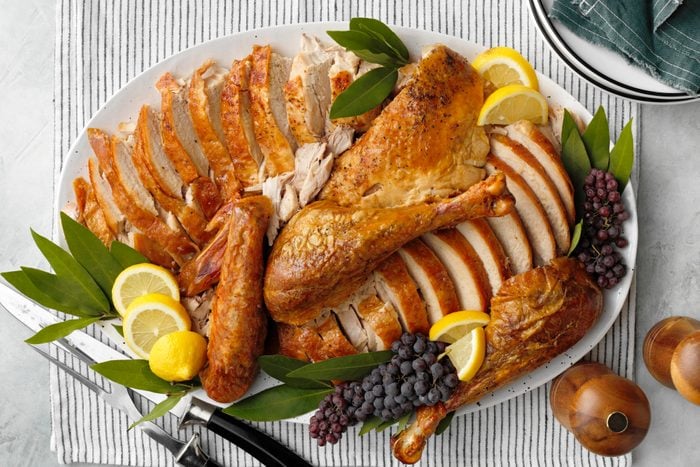
Want to do things differently this Thanksgiving? Learn how to create a moist, flavorful bird with a dry brine turkey.
There are a few different cooking methods for achieving the perfect Thanksgiving turkey, but dry brining is one of our favorites. A dry brine will guarantee juicy meat and flavorful, crispy skin. Plus, it saves time—instead of waking up at the crack of dawn to start cooking, plan to brine the turkey the day before.
Ready to try it? Here’s how to dry brine a turkey the right way.
What Is Dry Brine?
In short, a brine uses salt to add flavor, tenderize and infuse meat with extra moisture. It can be done by submerging a cut of meat into a saltwater solution (a wet brine) or by sprinkling salt directly onto the meat (a dry brine). Either way, the salt denatures the meat’s proteins, causing the muscle fibers to unravel and swell. That allows the cells to retain more moisture than normal, trapping extra liquid inside so that it can’t all evaporate during the cooking process.
Dry brine turkey works because the salt pulls out moisture from the meat, creating its own brine when it infuses with the meat’s juices. You’re not adding any excess liquid, so this method concentrates the turkey’s natural flavors. The process also allows the skin to dry out, creating a crispier exterior. And crispy skin is arguably the best part of a turkey!
Advantages of Dry Brining Turkey
The number one reason to dry brine is juicier, more flavorful meat—plus crispy skin! As the turkey rests uncovered in the fridge, the skin dries out, allowing it to get beautifully crispy and brown in the oven.
Many cooks find dry brining easier than wet brining because of space constraints. To wet brine a turkey, you need a container that’s large enough to hold five gallons of liquid. However, a dry brine turkey uses no water, so it takes up less space and requires much less fuss. Just keep in mind that the turkey must be at least partially thawed before you get started with a dry brine.
How to Dry Brine Turkey
For starters, choose a turkey that isn’t already salted (kosher, enhanced or self-basting). These turkeys already contain a salt solution, so brining them would make them too salty.
To dry brine a turkey, rub salt over the entire bird and then let rest in the refrigerator for 12 to 24 hours. Afterwards, pat it dry and cook the turkey however you wish.
Tools You’ll Need
The best thing about dry brine turkey is that it doesn’t require any special equipment. You’ll need a rack that allows air to circulate around the whole bird. You’ll also want something to catch the juices that drip as the turkey brines. A roasting pan with a rack works well, as does a baking sheet lined with a wire rack.
It’s also important to remember that since there’s no water involved, this turkey needs to finish thawing safely in the refrigerator.
Directions
Step 1: Prep the turkey
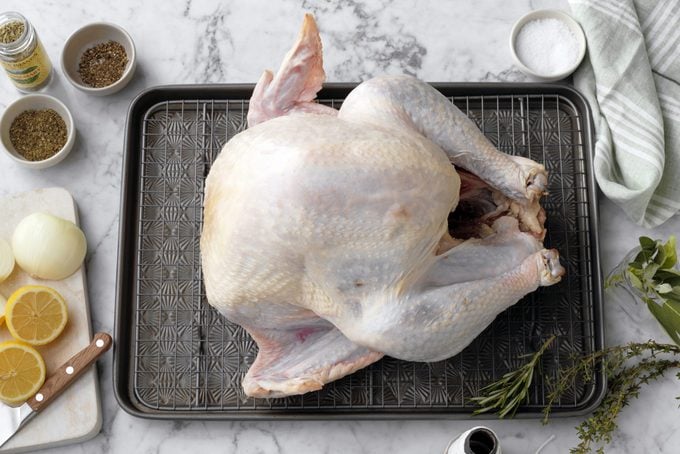
Remove the turkey from the packaging and set aside the neck and giblets. Pat the turkey dry with paper towels and set it on a rack over a roasting pan or baking sheet.
Step 2: Salt the turkey
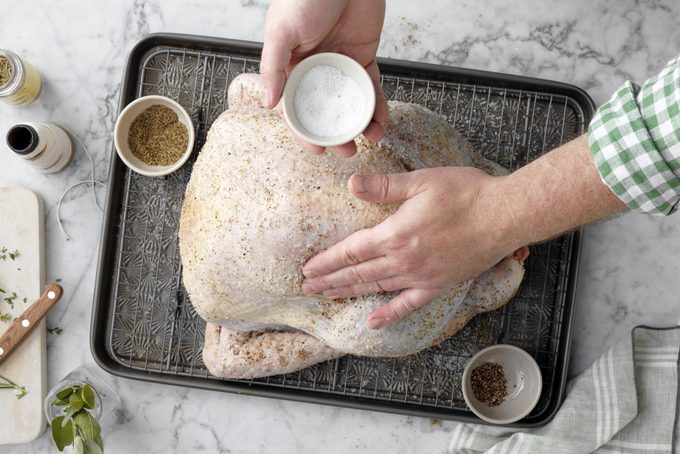
You’ll need 1 tablespoon of kosher salt for every 3 to 4 pounds of turkey. You can mix the salt with other dry rub spices to create an herb-rubbed turkey or keep things simple by using salt only. Sprinkle the salt over the skin, lightly rubbing it in.
The turkey should be well-coated with salt (but it shouldn’t be caked on).
Step 3: Let the turkey rest
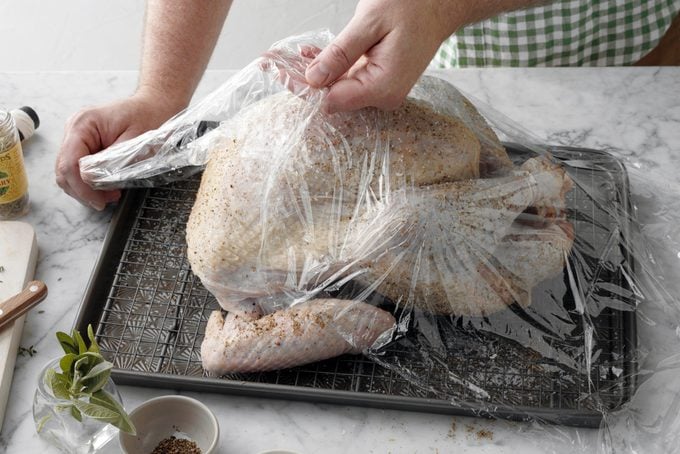
Let the turkey sit in the refrigerator, uncovered, for 12 to 24 hours. You can dry brine with this amount of salt for an additional 24 hours, but the flavor will get saltier and more concentrated. Cover the turkey loosely with plastic wrap after the first 24 hours.
Step 4: Pat it dry
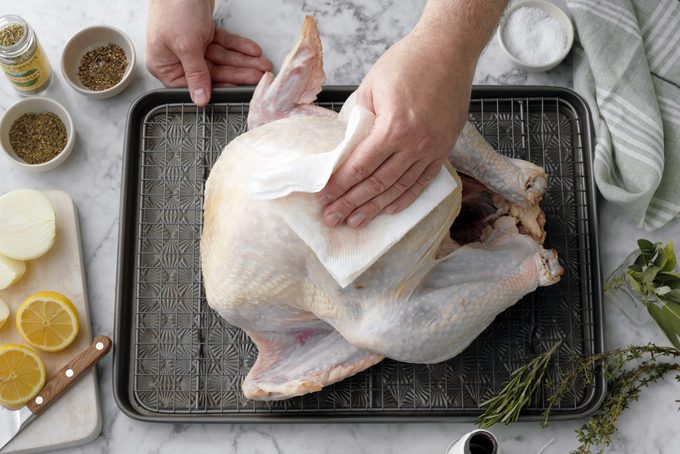
Pat the turkey dry with paper towels. It’s not necessary to wash off the dry brine, unless you think you may have used more salt than recommended. If you’re worried about the turkey being too salty, go ahead and rinse it. It won’t hurt anything. Just be sure to sanitize the sink and surrounding area, as raw poultry comes with a risk for foodborne illness.
Step 5: Cook the turkey
Roast, grill or smoke the turkey using your favorite recipe. If you need a refresher on how to cook your bird, we have all the best turkey tips to know for Thanksgiving.
Tips for Dry Brining Turkey
What is the best type of salt to use in a dry brine?
Kosher salt is the best type of salt to use when dry brining. It has the purest flavor with no additives, sticks to the meat nicely and spreads consistently. You can use sea salt in a pinch, but steer clear of table salt, which will make your turkey taste too salty.
What other herbs make the best tasting brine?
Salt is the most important ingredient for a dry brine, but adding in other herbs will result in even more delicious flavor. For traditional Thanksgiving flavors consider thyme, sage, rosemary and garlic. Some dry brine recipes also include sugar, which helps brown the skin.
How do you measure brine proportions for different sized turkeys?
You’ll need 1 teaspoon of kosher salt per pound of turkey. The turkey should be well-coated with salt (but it shouldn’t be caked on). When adding in other herbs and spices, plan on about 1-1/2 tablespoons of seasoning per pound of turkey.
